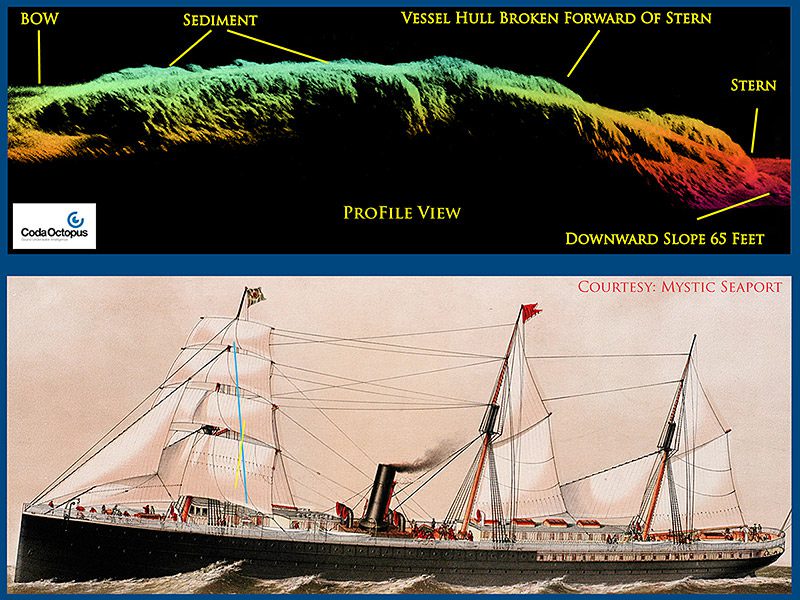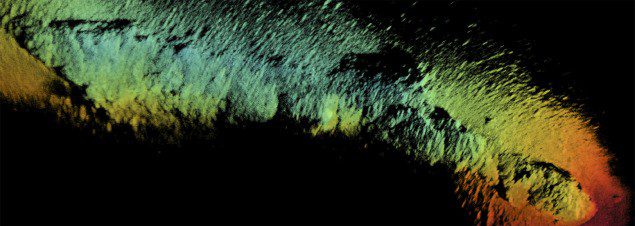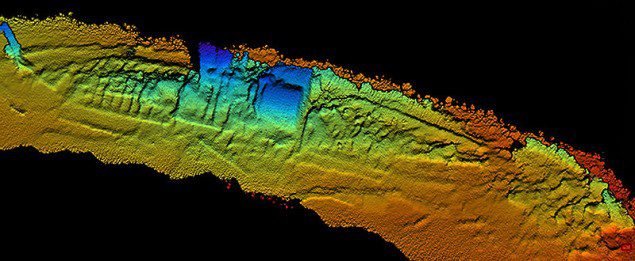Indian Seafarers Freed After Months of Detention at Yemen’s Ras Isa Port
India says it has secured the release of more than 150 seafarers who were stranded at Yemen’s Ras Isa Port, according to the Directorate General of Shipping. All 11 vessels...

The wreck of the SS City of Rio de Janeiro. Credit: NOAA
Some new images are for the first time revealing the shipwreck remains of what many consider to be the worst maritime disaster in San Francisco history.
The new images, released today by NOAA and partners, include three-dimensional sonar maps showing the wreckage of the SS City of Rio de Janeiro, an immigrant steamship which sank in dense fog on the morning of February 22, 1901 after striking jagged rocks near the Golden Gate Bridge. Of the 210 passengers and crew aboard, 128 people were killed as the ship sank almost immediately.
The images were released as part of a two-year study by NOAA’s Office of National Marine Sanctuaries Maritime Heritage Program to discover and document shipwrecks in Gulf of the Farallones National Marine Sanctuary and nearby Golden Gate National Recreation Area, encompasses nearly 1,300 square miles of of ocean and coastal waters beyond California’s Golden Gate Bridge.

“We are undertaking this exploration of the San Francisco Bay in part to learn more about its maritime heritage as well as to test recent advances in technology that will allow us to better protect and understand the rich stories found beneath the Bay’s waters,” said James Delgado, director of maritime heritage for NOAA’s Office of National Marine Sanctuaries. To date NOAA has plotted nine of nearly 200 ships including four never before found vessels.
In November, Hibbard Inshore and Bay Marine Services donated a research vessel and crew, along with a high-powered remotely operated vehicle, to help NOAA pinpoint and map the City of Rio de Janeiro wreck site using three-dimensional Echoscope® sonar developed by Coda Octopus.
California-based salvagers first located the wreck in the 1980s, but its exact location was unknown as the coordinates they provided did not coincide with any wreck charted by NOAA through years of sonar work.
During this expedition, Robert Schwemmer, West Coast Regional Maritime Heritage Coordinator, worked with Delgado and multibeam sonar expert Gary Fabian to locate the wreck site again. They found the site in 287 feet of water, positioned inside the main ship channel, and largely buried in mud.
The team also completed the first detailed map of S.S. City of Chester, which was rediscovered late last year in the vicinity of City of Rio. A full collection of video of City of Rio, photographs and other materials can be found HERE.

“The level of detail and clarity from the sonar survey is amazing,” Schwemmer said. “We now have a much better sense of both wrecks, and of how they not only sank, but what has happened to them since their loss.”
City of Rio de Janeiro, launched in 1878, joined the fleet of the Pacific Mail Steamship Company, carrying passengers and freight to and from San Francisco, Honolulu, Yokohama, Japan and Hong Kong as America expanded into the Far East and Pacific after the Civil War. Most Americans whose ancestors came to the United States from the Far East in the 19th and early 20th centuries to start a new life arrived on ships like City of Rio de Janeiro.
City of Rio de Janeiro was rumored to be full of silver treasure, but Delgado said accounts of a shipment of “Chinese silver” were actually bars of tin. “Today the wreck is broken and filled with mud, and it is a sealed grave in fast, dangerous waters in the main shipping lanes,” he said.

Sign up for gCaptain’s newsletter and never miss an update

Subscribe to gCaptain Daily and stay informed with the latest global maritime and offshore news


Stay informed with the latest maritime and offshore news, delivered daily straight to your inbox
Essential news coupled with the finest maritime content sourced from across the globe.
Sign Up